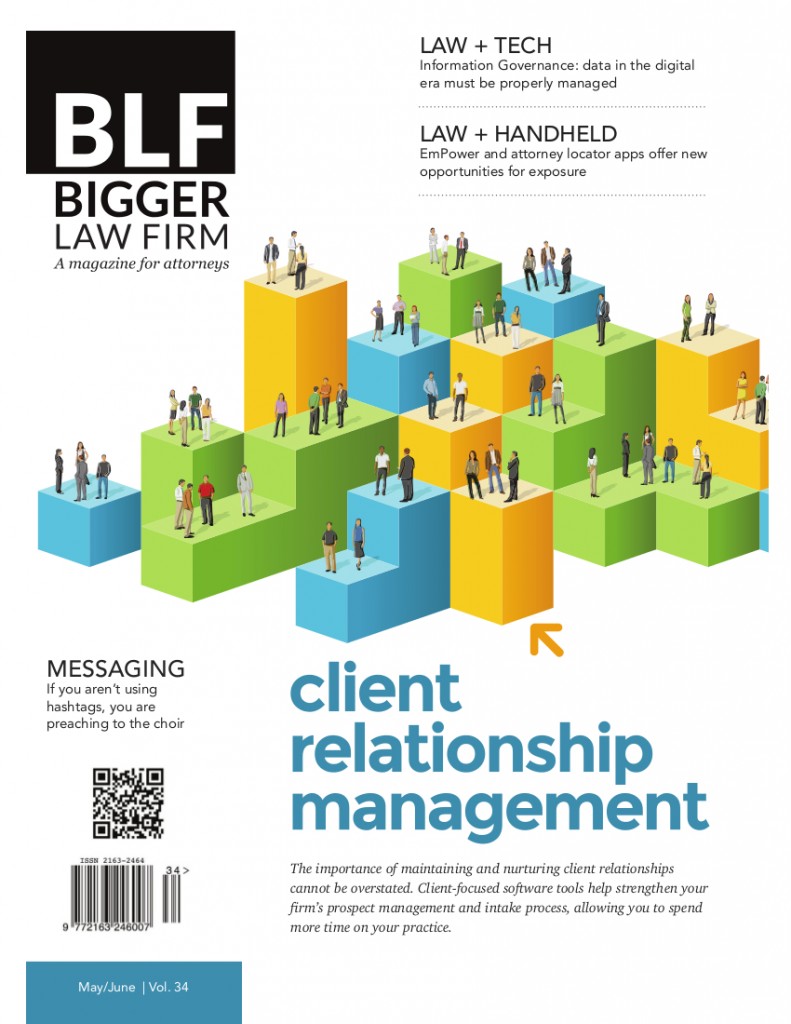San Francisco, CA (Law Firm Newswire) July 28, 2015 - The latest issue of The Bigger Law Firm magazine provides an in-depth look at Client Relationship Management (CRM) systems for law firms.
BLF helps attorneys and law firm marketers take advantage of the latest strategies and technologies for connecting with clients. In this issue, Ryan Conley gives a broad overview of various types of CRM systems, from simple online tools to full-fledged CRM software suites.
When people think of CRM software, they may think of law firm management software, and that is certainly an important tool in managing client relationships. However, Conley points out that there are some simpler tools that can help with important client communication. He discusses two add-ons for Gmail that can help attorneys communicate with clients and manage their inbox. Boomerang is an add-on that allows users to schedule emails to be sent at a future date, or remind the user to reply to an email or follow up about one that has been sent. Streak is another add-on that has some of the same features as Boomerang, but also turns Gmail into a business productivity tool by moving contacts through “pipelines,” or series of categories, such as prospective clients or closed matter.
In the middle range of CRM products are law practice management solutions such as Actionstep and Rocket Matter, which provide more full-featured management tools but are not comprehensive CRM suites. Many of these products are “software as a service,” or cloud software, meaning that the software does not reside on the firm's own servers but is accessed solely over the internet. Conley addresses the issues that arise with this type of system, and concludes that a firm's data may be safer in the cloud than it is in the office, and its heightened mobility and flexibility mean that cloud computing is here to stay.
Larger firms will need a full-fledged CRM software suite, and Conley discusses the features offered by a few of the most popular solutions available, including InterAction, CRM4Legal and i/o Grow. While all the major CRM suites offer integration with the most popular email, invoicing and word processing programs, firms will need to research which software suite will best meet their needs.
Conley's article is one of many pieces in this issue of BLF that focus on helping law firms use technology to grow their business.
To learn more about how to build a Bigger Law Firm, visit https://www.biggerlawfirm.com
- Google Limits Search Results Per Domain for More Diversity – How Does This Affect Law Firms?
- Big Results for Big Law Firms
- The Role of Cybersecurity in the Legal Field
- SEO Hierarchy of Needs: A Guide for Beginner Law Firms
- Should Law Firms Use Chatbots Rather Than Mobile Forms?
- Outside the Box: Non-Standard Lawyer Website Inspiration
- Does Your Firm Need a Legal Credit Card Processor?
- How Facebook’s New Political Ad Guidelines Are Affecting Lawyer Advertising
- Why Law Firms Need to Use VPNs
- Why Newsletters Fail and How Your Law Firm’s Newsletter Can Succeed

